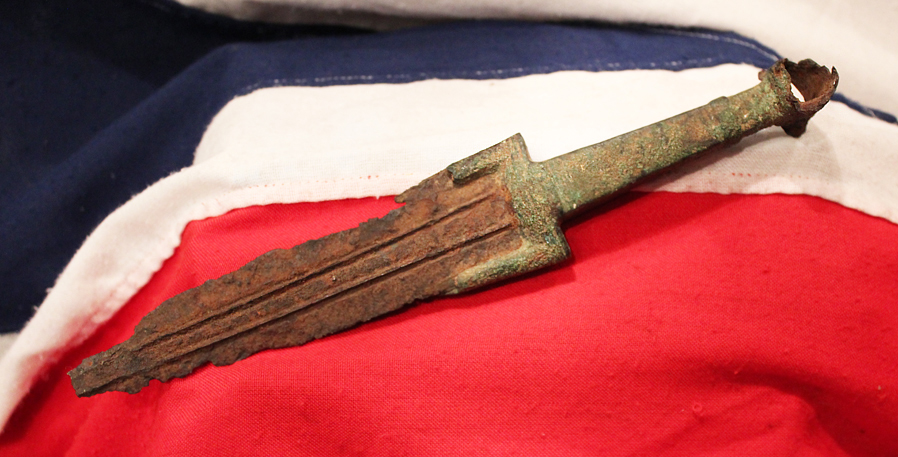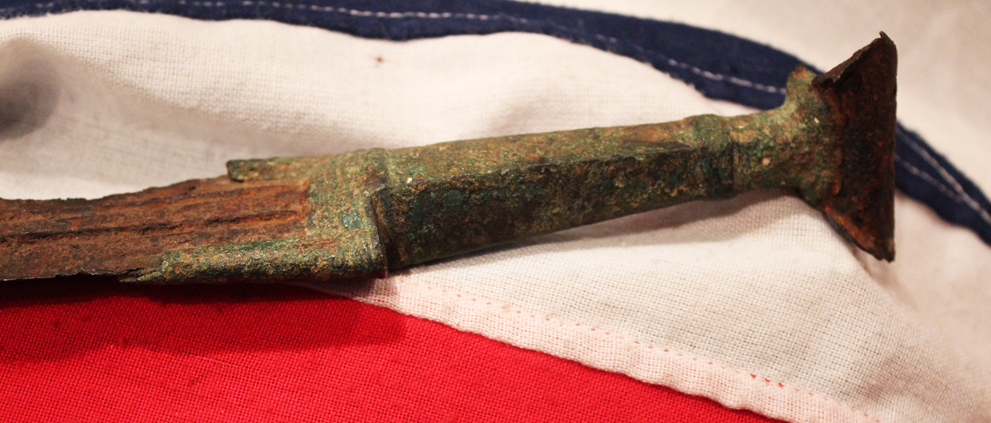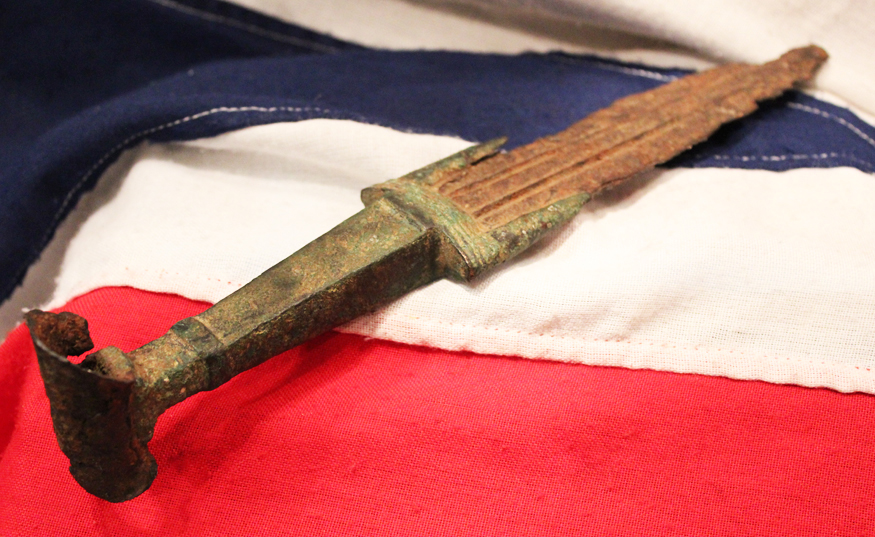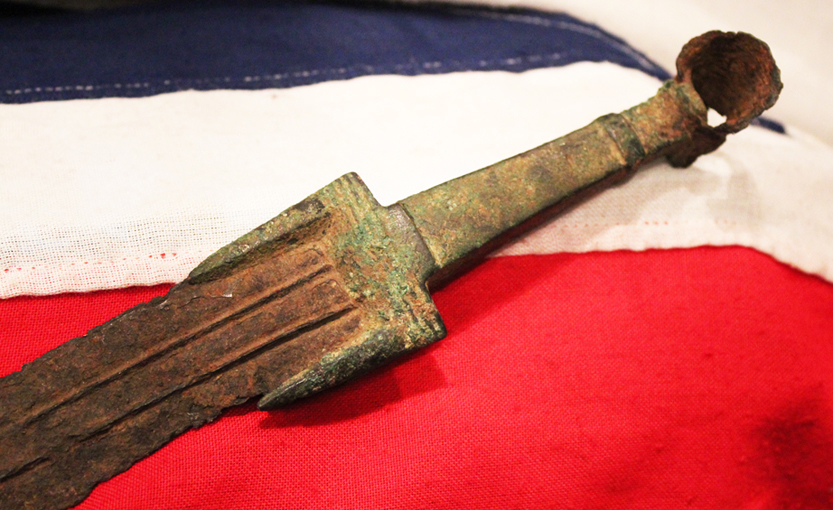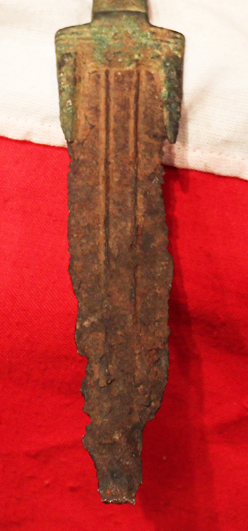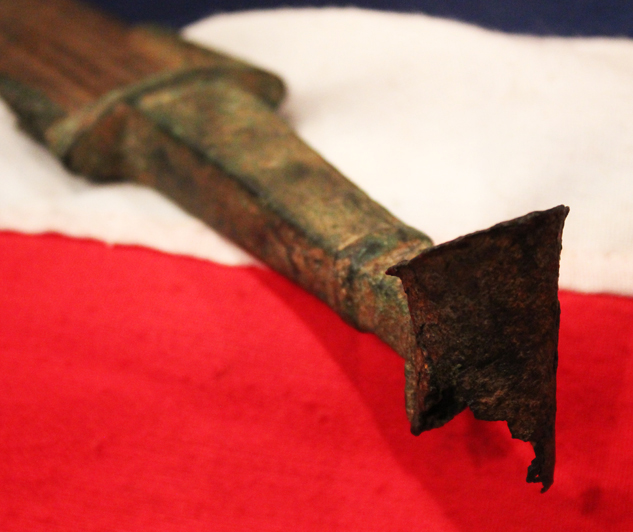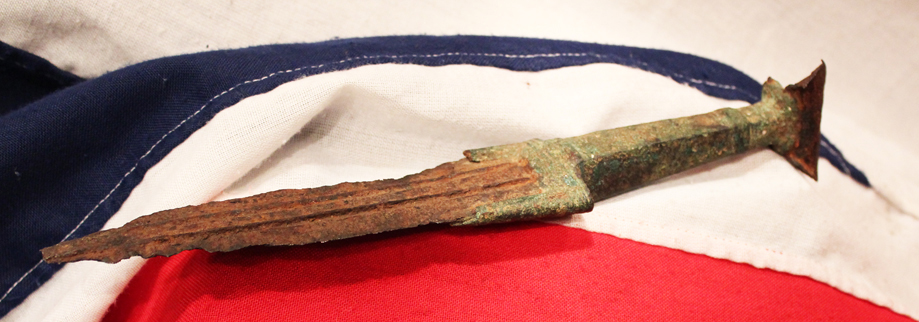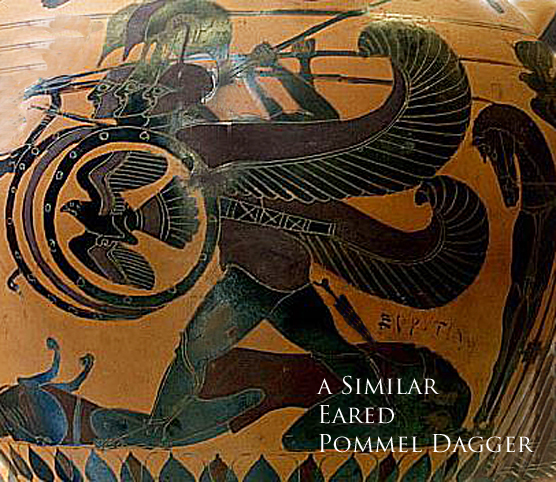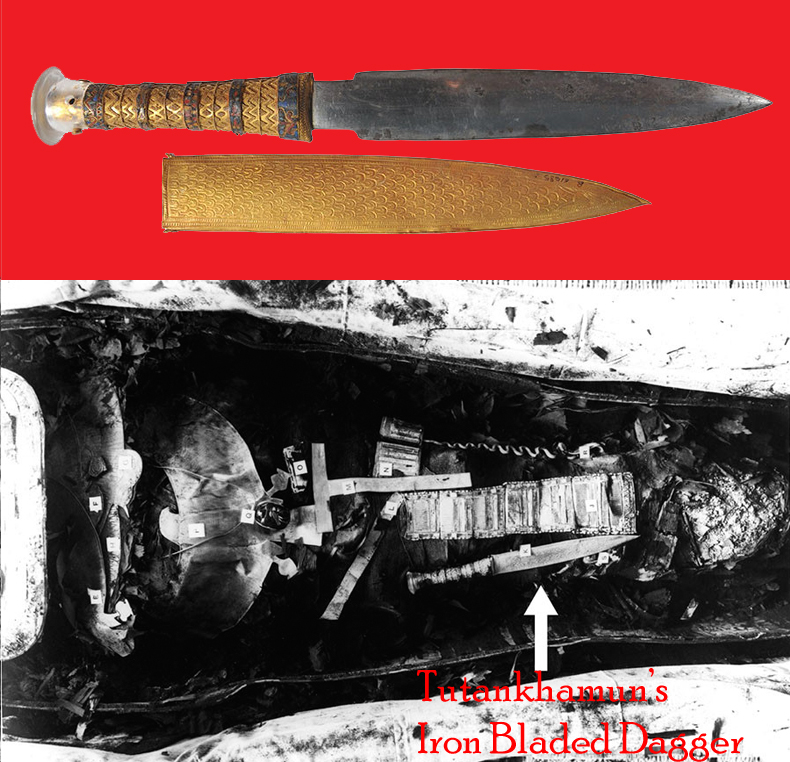A Very Rare & Simply Stunning, Original Ancient Classical Early Iron & Bronze Age Dagger, Circa Three Thousand Two Hundred Years Old, From The Time of The Trojan Wars & The Siege of Troy. As Detailed In Homer's Iliad
This is one of the earliest ancient classical iron and bronze daggers we have ever seen, and only Tutankhamun's iron and gold dagger is known to exist that is that much older than this finest example. A near identical dagger is decorated upon an archaic attic ware amphora, circa 550 bc, a scene of ancient, warring mythical figures, that resides in a famed Paris museum.
We show in the gallery a piece of decorated ancient Greek attic ware, with a scene of Hercules and Geryon, and the warrior, on the right of three winged warriors in the photo, bears a so similar dagger, as could be deemed identical, swinging from his waist. It is on display at the Cabinet des Médailles, in Paris, catalogued as an Attic Black Figure Shape Amphora. ca. 550 - 540 B.C. from the Archaic period
This dagger is in very good excavated condition, found around 250 years ago, so its blade's condition is very aged, yet it is in fantastic condition bearing it mind it is around 3200 years old.
One cannot over emphasise the rarity of such as this wonderful piece, and to find a Bronze Age and earliest Iron Age combination metals dagger, it a rare treasure indeed. From the ancient pre-history era, made in the time of the Siege of Troy, the ancient Phoenicians, and the earliest period of ancient Greek and Minoan pre-history.
It is incredible to comprehend that this fine piece would have been a revered weapon when it was likely used around the time of the Siege of Troy, and during the earliest Greek-Persian Wars. It would have already been 700 years old and a piece of great antiquity, at the time when Alexander The Great was embarking on his extraordinary campaign to conquer the Persian Empire in 335 BC.
He eventually conquered half the known world and was to become the greatest ruler in history. This exceptionally beautiful and rare artefact, around 3000 years old, and it superbly demonstrates the skill of the artisans from the bronze age and iron age combined.
With a flanged eared pommel in iron, a bronze hilt and grip, and a double ribbed double edged blade in iron/steel. In 3000 BC plus, iron was a tremendously scarce and precious metal, scarcely know around most of the world.
The earliest known iron artefacts, apart from Tutankhamun's Dagger, are nine small beads, dated to 3200 BC, from burials in Gerzeh, northern Egypt, and they were also made from meteoric iron, and shaped by careful hammering. King Tut continues to astound the archaeological community, as new research shows that the ancient Egyptian child pharaoh was buried with a dagger that part originated from the heavens.
The iron bladed dagger placed in his sarcophagus, next to the right thigh of his mummified body, was manufactured from a meteorite, according to researchers from Milan Polytechnic, Pisa University and the Egyptian Museum in Cairo.
The team carried out an analysis using non-invasive, portable X-ray fluorescence spectrometry and published their results in the journal Meteoritics and Planetary Science.
Archaeologist Howard Carter’s discovery of King Tut’s tomb in 1922 sparked worldwide fascination with the 14th Century BC pharaoh. Three years later, two blades one iron and one gold were found in the wrapping of the 18th Dynasty mummy. Iron's qualities, in contrast to those of bronze, were not understood. Between 1200 BC and 1000 BC, diffusion in the understanding of iron metallurgy and use of iron objects was fast and far-flung. In the history of ferrous metallurgy, iron smelting, the extraction of usable metal from oxidized iron ores, is more difficult than tin and copper smelting. These other metals and their alloys can be cold-worked, or melted in simple pottery kilns and cast in moulds; but smelted iron requires hot-working and can be melted only in specially designed furnaces. It is therefore not surprising that humans only mastered iron smelting after several millennia of bronze metallurgy. We show in the gallery Tutankhamun's iron bladed dagger and Carter's photograph of its discovery in his tomb. 11.5 inches overall, approx. 16 ozs
Code: 22582

